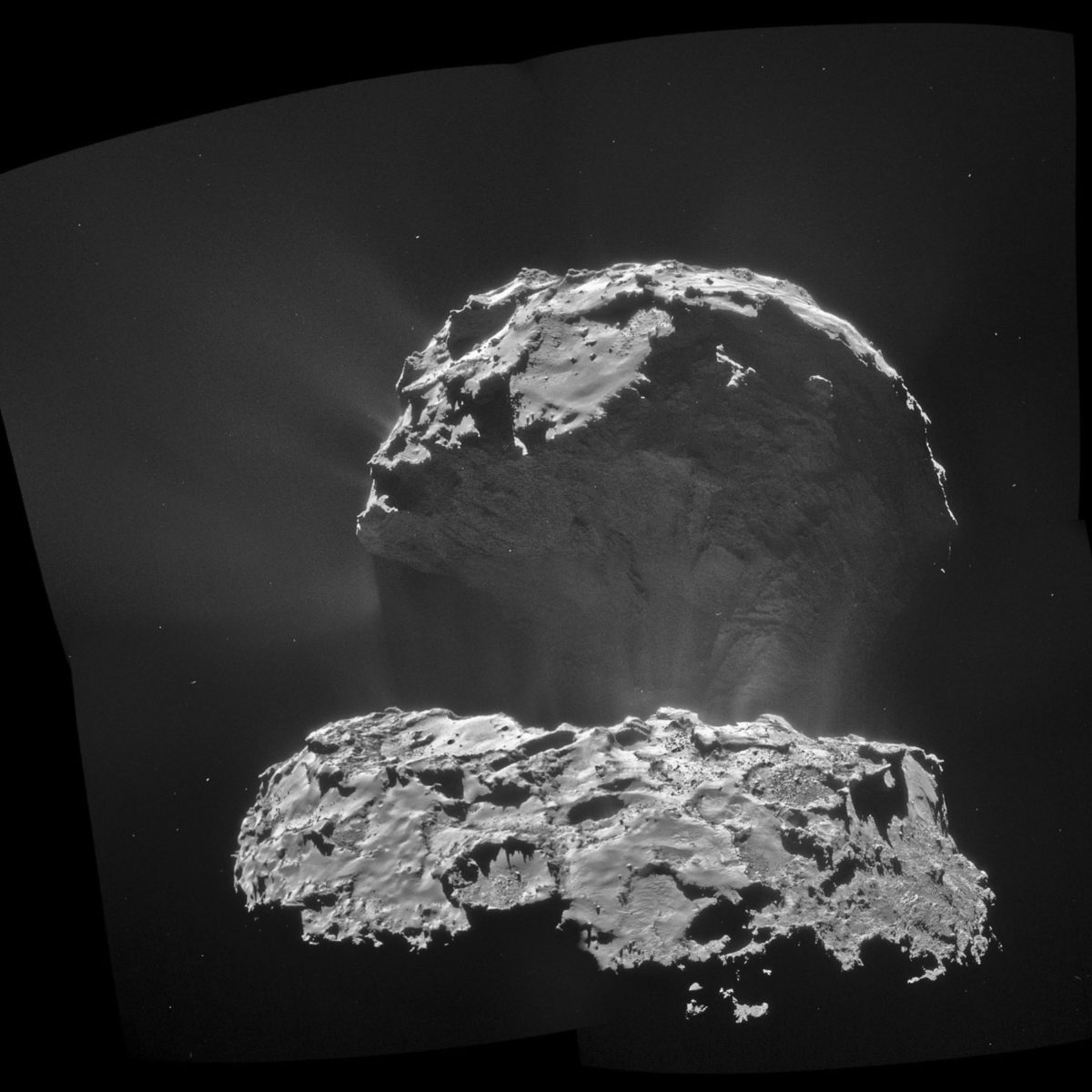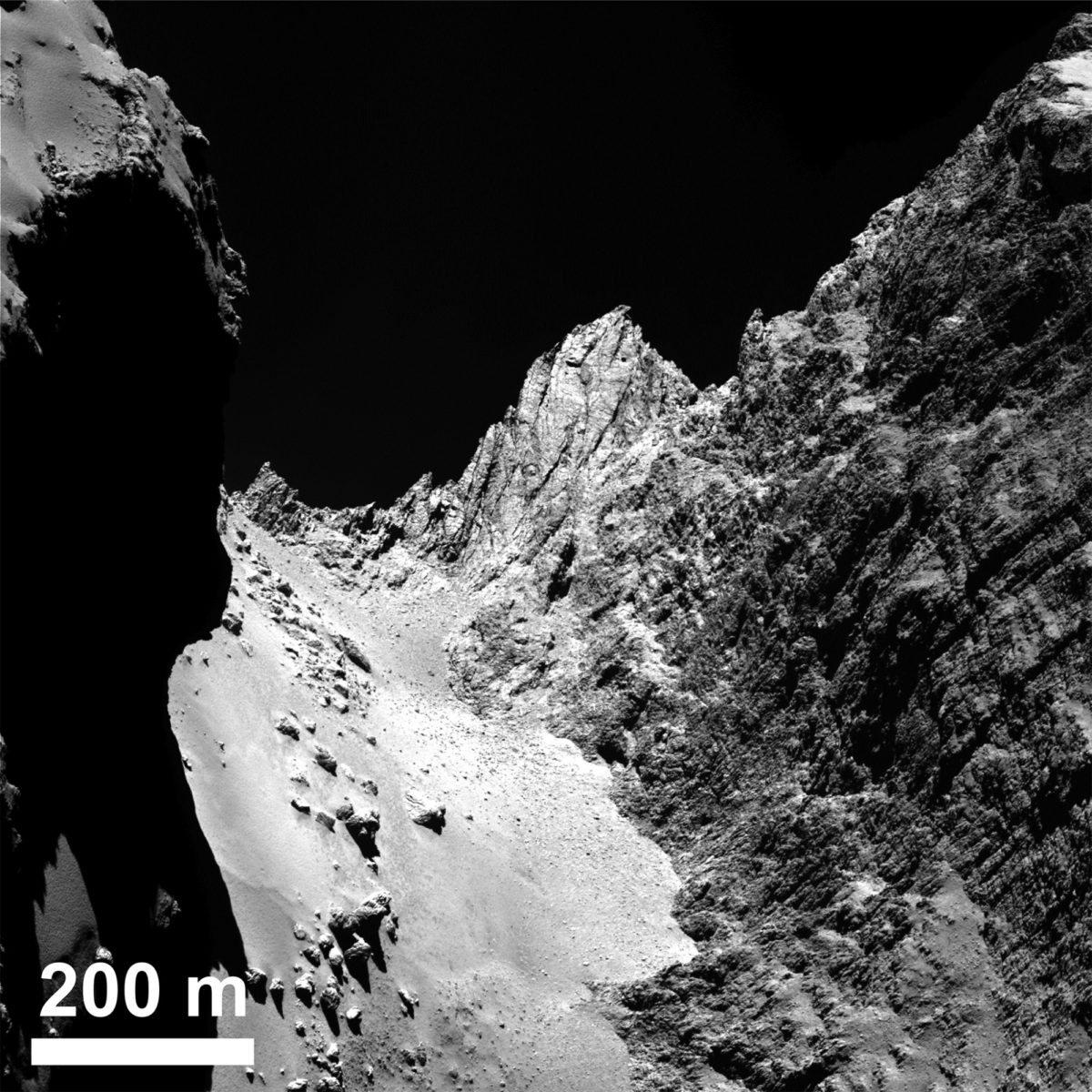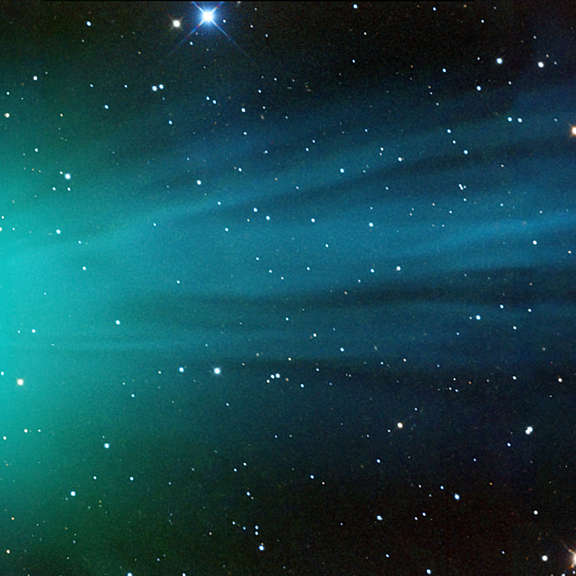All
All
Stories, updates, insights, and original analysis from The Planetary Society.
An active comet, from a distance
Rosetta has closed to within 50 kilometers of Churyumov-Gerasimenko, on its way to a very close, 6-kilometer flyby of the comet tomorrow. To prepare for the flyby, Rosetta traveled much farther away, allowing it to snap these amazing photos of an increasingly active comet from a great distance.
Rosetta shifts from sedate circular orbits to swooping flybys
For the period of time before and after the Philae landing, Rosetta was able to orbit the comet close enough that it was in gravitationally bound orbits, circling the comet's center of gravity. As the comet's activity increases, the spacecraft has to spend most of its time farther away, performing occasional close flybys. The first of these is at 6 kilometers, on February 14.
At last! A slew of OSIRIS images shows fascinating landscapes on Rosetta's comet
The first results of the Rosetta mission are out in Science magazine. The publication of these papers means that the OSIRIS camera team has finally released a large quantity of closeup images of comet Churyumov-Gerasimenko, taken in August and September of last year. I explain most of them, with help from my notes from December's American Geophysical Union meeting.
Addressing some common questions about Comet Lovejoy
Lowell Observatory's Matthew Knight addresses several points of confusion that have repeatedly come up in the coverage of Comet Lovejoy.
Pretty Picture: Comet Lovejoy
Astrophotgrapher Adam Block shares an image of Comet Lovejoy, which is currently visible with binoculars.
New Churyumov-Gerasimenko Shapemodel!
Mattias Malmer shares his latest shape model of Comet 67P/Churyumov–Gerasimenko, created using data from the Rosetta spacecraft.
Remember Comet Siding Spring? Mars Orbiter Mission got photos, too
A set of photos released by Mars Orbiter Mission last week completes the set of Mars spacecraft observations of the comet. Now we wait for science results!
Rosetta imaged Philae during its descent -- and after its bounce
This morning ESA released a set of images of the Philae lander taken by the Rosetta orbiter during -- and after -- the lander's first touchdown. The images contain evidence for the spot Philae first touched the comet, and a crucial photo of Philae's position several minutes into its first long bounce.
Brief Philae "Morning After" update: First ÇIVA panorama from the surface
I'm just getting up to speed on the news from overnight, which is mostly good: Philae remained in contact with the orbiter (which means the CONSERT radar sounding experiment was working), and it's sitting stably on the surface, although it's not anchored in any way. And they released the first ÇIVA image from the ground!
Philae status, a day later
The Philae team scrambled all morning to comprehend the initially confusing status of the lander, and the picture is much clearer today. Speaking of which, there are lots more pictures!
PHILAE HAS LANDED! [UPDATED]
The landing happened on time just after 16:02 UT today! Philae mission manager Stephan Ulamec said:
Report from Darmstadt: Philae status and early Rosetta results from DPS
I'm reporting live from the press room at the European Space Operations Centre in Darmstadt, Germany. There's little news on Philae yet except that its status is good. Meanwhile, Rosetta scientists presented their first early comet results at the Division for Planetary Sciences meeting in Tucson, Arizona, which I watched from afar using Twitter.
Mars Exploration Rovers Update: Opportunity Images Comet, Ducks Storm, Departs Ulysses
As winds whirled and converged to the west of Endeavour Crater, Opportunity's power dropped dramatically in October, but the Mars Exploration Rover (MER) pressed on. By month's end, the robot field geologist had completed her assignments – including capturing the first close-in shot of a comet from the surface of the Red Planet – and was roving onward through the darkness, driving the mission into the 130th month of what started out more than 10-and-a-half years ago to be a 3-month tour.
Seven Mars spacecraft attempted observations of comet Siding Spring. How did they go?
It's been two weeks since comet Siding Spring passed close by Mars, and six of the seven Mars spacecraft have now checked in with quick looks at their images of the encounter. I round up all the results.
A (Difficult) Day in the Solar System
After a bad day on the launch pad, some perspective.
A feast of comet features from Rosetta at Churyumov-Gerasimenko
I have been horribly behind in posting images from Rosetta's exploration of comet 67P/Churyumov-Gerasimenko, and that's a shame, because the spacecraft has lately been exploring the comet from a range of only 10 kilometers. From that range, the NavCam gets sub-meter resolution, and we're seeing a menagerie of odd surface features
Rosetta NAVCAM's Shades of Grey
What do “light” and “dark” mean for an object like Comet 67P/C-G? Here are some details on how Rosetta's NAVCAM images are taken and displayed to make a wide range of surface features possible.
Herschel observations of Comet Siding Spring initiated by an amateur astronomer
The European satellite Herschel acquired images of Comet Siding Spring before its death in 2013 — thanks to an observing proposal from an amateur astronomer!
Status update: All Mars missions fine after Siding Spring flyby
All seven Mars spacecraft are doing perfectly fine after comet Siding Spring's close encounter with Mars.
Watching Siding Spring's encounter with Mars
The nucleus of comet Siding Spring passes close by Mars on Sunday, October 19, at 18:27 UTC. Here are links to webcasts and websites that should have updates throughout the encounter.


 Explore Worlds
Explore Worlds Find Life
Find Life Defend Earth
Defend Earth


 Sun
Sun Mercury
Mercury Venus
Venus Earth
Earth Mars
Mars Jupiter
Jupiter Saturn
Saturn Uranus
Uranus Neptune
Neptune Small Bodies
Small Bodies


















